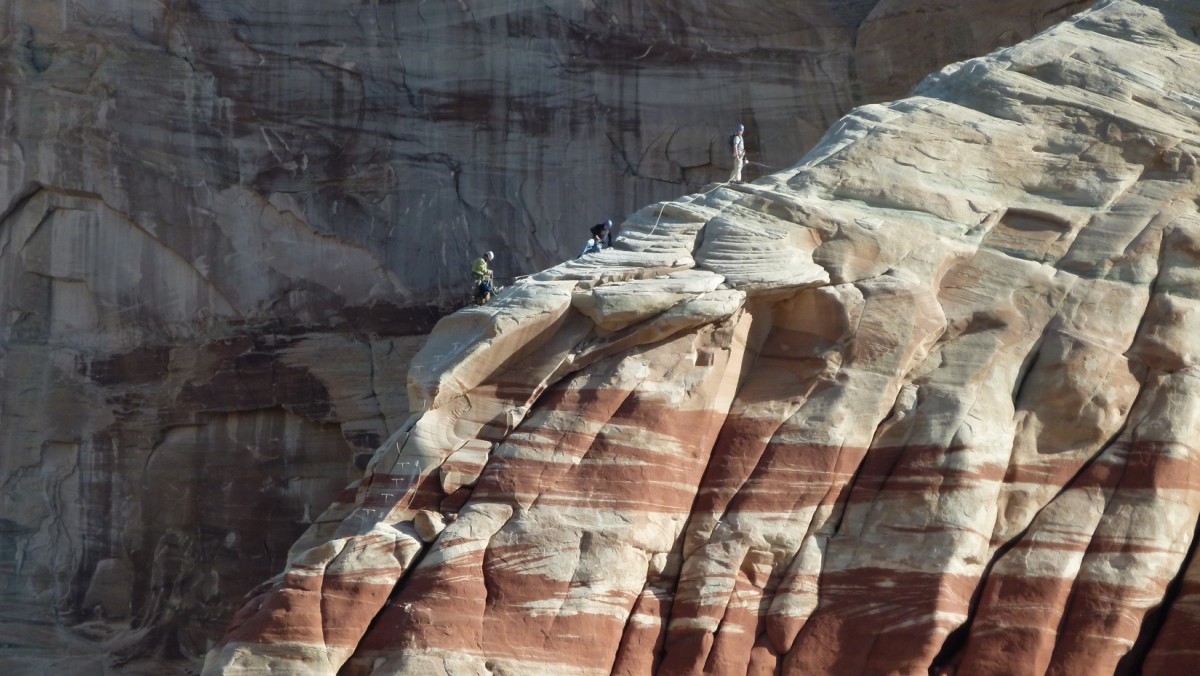MansBrand.com Articles Provided as noted by attribution.
We’ve been thinking a lot about outdoor activities that embrace social distancing. There’s kayaking, SUPing, biking, backpacking, hiking, running, and outdoor rock climbing. The trouble is that many of these past times require a high level of physical fitness, lots of experience, and a big investment in gear. But there’s one activity—via ferrata climbing—that nearly anyone can do. Via ferratas, which involve climbing rock faces with pre-placed hand and foot holds, and safety cables, are the great outdoor equalizer. Via ferratas’ popularity in the U.S. has increased with the appearance of COVID-19 as the public turns to the outdoors for a socially distanced “earned” adventure. With the proper equipment and a quick lesson on how to use it properly, nearly anyone can have a fun alpine experience. And, chances are, if you live near a mountain, ski resort, or cliff, there’s one near you. This accessible and egalitarian way to climb offers one of the best socially distant options for a responsible summer escape.
What is a Via Ferrata?
Via ferrata is an Italian term that mean’s iron road, or path (in Germany and Austria it’s called klettersteig). They involve a network of steel ladders and cables that are anchored into the side of a cliff or mountain and allow people to climb rock faces and ridgelines that would normally only be accessible to experienced alpinists and rock climbers. You wear a climbing harness, and clip into a continuous system of safety cables. Sometimes you use natural foot and handholds, but in general you grab metal rungs that snake up and across rock faces. Routes wind through hidden alpine forests, or snake along wide, flat ledges before they again ascend cliff bands. Many via ferratas feature cable-protected suspension bridges that cross canyons, waterfalls and creeks. Some end with zip-lines. You are “clipped in” with two specialized, self-locking carabiners. If you can climb a ladder, you can ascend a via ferrata. They are climbed by people of all ages (generally the recommended minimum age is 10). And, other than a quick session on how to use the gear, they don’t require any experience.
16 Local, Low-Impact ‘Microadventure’ Ideas for Pandemic Isolation and Social Distance
Read article>

The via ferrata route of the Amangiri resort in Canyon Point, UT.Adventure Partners Attractions
There are more than 400 via ferratas in Italy alone, with many more in France, Austria, China, Canada and Australia. They are becoming increasingly popular in North America as many ski areas are building them to attract summer and fall guests. One company, Adventure Partners Attractions, out of Page, AZ, has designed and installed the routes and walkways at Jackson Hole (WY), Mammoth (CA), Royal Gorge Bridge and Park (CO), Amangiri Resort (UT), Taos (CA) and Arapahoe Basin (CO). The Taos Via Ferrata should open by August, with the one at Arapahoe Basin planning a September debut. “Via ferratas are like a ‘gateway drug’ to rock climbing,” says Mike Friedman, managing partner at Adventure Partners Attractions. “They encourage people who would otherwise shy away from belayed climbing and exposure to venture into the world of the
The post America’s Best New (and Most Classic) Via Ferrata Routes appeared first on MansBrand.
from MansBrand https://www.mansbrand.com/americas-best-new-and-most-classic-via-ferrata-routes/?utm_source=rss&utm_medium=rss&utm_campaign=americas-best-new-and-most-classic-via-ferrata-routes
via IFTTT
No comments:
Post a Comment